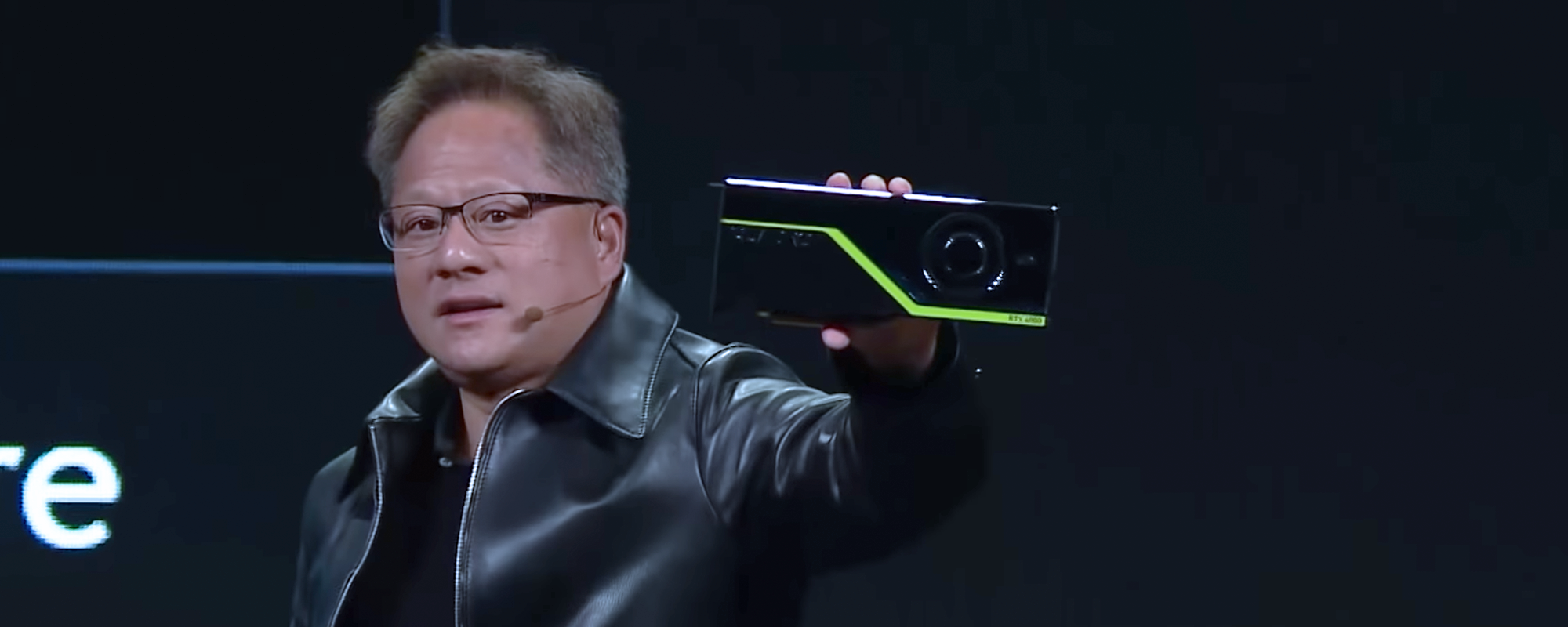
GTC Europe in Munich Germany: The world of interactive graphics has changed. By merging GPU computing with accelerated AI, NVIDIA opens new frontiers on realistic, real-time rendering.
NVIDIA Turing Architecture changes graphics
Graphics Holy Grail is real-time, photorealistic images. NVIDIA has achieve this feat by blending two computational domains into a unified, graphics pipeline.
The first is traditional, accelerated graphics. The GPU power is dedicated to computing rays. The initial results are then enhanced using the power of AI deep learning to calculate the remaining pixels. The results are amazing, beautiful, realistic, and completely interactive images.
The magic behind this feat is NVIDIA's new Turing architecture for the RTX GPUs. The new architecture combines new GPU cores, called RT Cores, that are dedicated to fast ray-tracing. In addition to new RT cores, the entire GPU architecture has been enhanced to increase performance for shader units, memory bandwidth, and GPU instruction execution. Details are available on the NVIDIA blog. A less technical introduction to the Turing Architecture can be found on NVIDIA's site. Then there is also the Turing Architecture White Paper for download.
Beyond the technology, however, lies two significant business opportunities. In NVIDIA's traditional gaming business, new games will follow that deliver remarkable visual experiences by using NVIDIA's new GPUs. One has to wonder aloud how soon AMD will be able to follow NVIDIA down this path.
While this will protect NVIDIA's position in the gaming market, the second business opportunity has the potential to lead to aggressive growth for NVIDIA's professional graphics products. Today, ray-tracing and realistic rendering is largely the domain of the CPU. NVIDIA's new Turing architecture can flip a large business segment for realism in design visualization, marketing, and entertainment from CPUs to GPUs. This expands NVIDIA's TAM in professional graphics which, importantly, is NVIDIA's high-margin Quadro GPU family.
Technology solutions for efficient workflows, AI development, and professional VR
NVIDIA technology enables many solutions across professional markets. The expertise of large companies as well as start-ups pull together total solutions that can enhance productivity, lower costs, and improve business results. Below are several examples in the areas of virtual reality, artificial intelligence, and remote workstation technology.
Professional VR solutions
NVIDIA itself leads by example. The NVIDIA Holodeck in its 2018 form was on display at the Munich GTC. Enhancements include new data import and export capabilities. This allows integration of architectural models in the holodeck as well as round-trip editing functionality, both of which were absent last year. NVIDIA also prepared a full-scale automotive design review demonstration using wireless HTC Vive HMDs. While the Holodeck remains a non-product, NVIDIA has made the technology available to some clients and actively solicits feedback. This provides hope that the technology will be released as a customer product, a developer platform, or both.
StarVR One
While NVIDIA used HTC Vive Pro headsets in their Holodeck demonstration, the image quality and field of view is not at a level that professional VR customers can easily accept. StarVR was present in NVIDIA's VR Village with an HMD, the StarVR One, an HMD that targets professional customers and that goes well beyond the performance of the HTC product.
The product is a well-designed HMD that provides a 210° FOV and exceptional visual quality compared to semi-professional HMDs like the Vive Pro. The company has custom-designed the AMOLED displays and Fresnel lenses. Eye-tracking technology allows for automatic IPD measurement so that the HMD is easily adapted to your specific needs. The result is a clearer, more immersive VR experience.
The company provides an SDK for developers which provides access to the HMD's hardware features. For example, ISVs can use the the StarVR One's eye-tracking technology to create a "hot spot" map which shows where the user's gaze was focused during a VR session. Such capabilities can be extremely valuable to customers in design and marketing domains. This also allows for important optimizations such as Foveated Rendering in which the area of focus is rendered in more detail and the extremities in the FOV are rendered with less detail. The result is to improve graphics performance, increase reactivity of the system, and improve the ability to work within a VR environment.
Scan is focused on artificial intelligence
Scan Computers International Ltd presented their expertise in artificial intelligence. The Scan team is focused on accompanying customers on their journey to implement artificial intelligence solutions. The company has developed the expertise in AI and is an NVIDIA Deep Learning Institute partner. Andrew Holdsworth, Head of Scan Business, explains that the company provides AI solutions which are designed to maximize performance for the complete system. This entails matching the performance levels of the GPU, memory, storage, processors, networking, etc.
Scan works with clients in ways that allows customers to test-drive solutions at different price points and at different performance levels. This is important since no two AI projects are identical. Mr. Holdsworth understands that when a customer selects an AI solution, the customer should know that this particular AI solution is the best one for their needs. Scan has created an artificial intelligence eco-system. This eco-system allows Scan to provide expertise and solutions for clients at any stage in their project.
Remote workstations from Cisco deliver great performance anywhere, anytime with HyperFlex
Workstations can be expensive. Whether it is a desk-top workstation or a mobile workstation, the hardware is a significant investment. And that it tied to one user. Cisco combines their HyperFlex platform and NVIDIA Grid. This solution delivers high-end workstation performance to anyone anywhere in the world.
The combination of Cisco's networking expertise and NVIDIA's GPU virtualization features allows for a low-latency, high-performance workstation deployment from a centralized data center facility to users in the field where ever they may be.
On display at GTC was a demonstration using Bentley Systems software with a laser-scanned model of a large processing facility. The data set is enormous which means downloading the data to the remote client is impractical. Usually, that is also undesireable as this kind of data is often confdential and companies prefer to keep the data in a secure location. Using a remote workstation solution is a good fit as the user gains the flexibility of working from any location, receives a high-performance workstation environment, and the company maintains the security of proprietary information.
In addition, the solution scales well across dozens to hundreds of users and allows for workstation resources to be shared 24 hours a day around the globe with many unique workstation users.
Deploying virtual desktops with Dell CCC gives customers a powerful, manageable, end-to-end solution
The Dell Cloud Client Computing group focuses on remote desktop virtualization solutions. Dell is uniquely equipped to provide a complete end-to-end solution for remote workstation desktops. At the GTC Europe in Munich, Germany, Hagen Dommershausen demonstrated a Windows 10 desktop remotely running multiple graphics-intensive applications from a facility in Amsterdam.
A key benefit in this solution is the strategy of mobility. Dell's solution delivers a secure, high-performance workstation experience to employees working remotely with any kind of client device. As with all data center deployments of workstation technology, companies gain the security of keeping confidential IP and designs in a secure server facility. At the same time, employees have access to their standard work environment from practically any location in the world.
Dell EMC provides an end-to-end option for customers which includes servers, networks, storage, virtualization software, remote access protocols, as well as client devices like thin clients, desktop computers, and mobile workstation.





